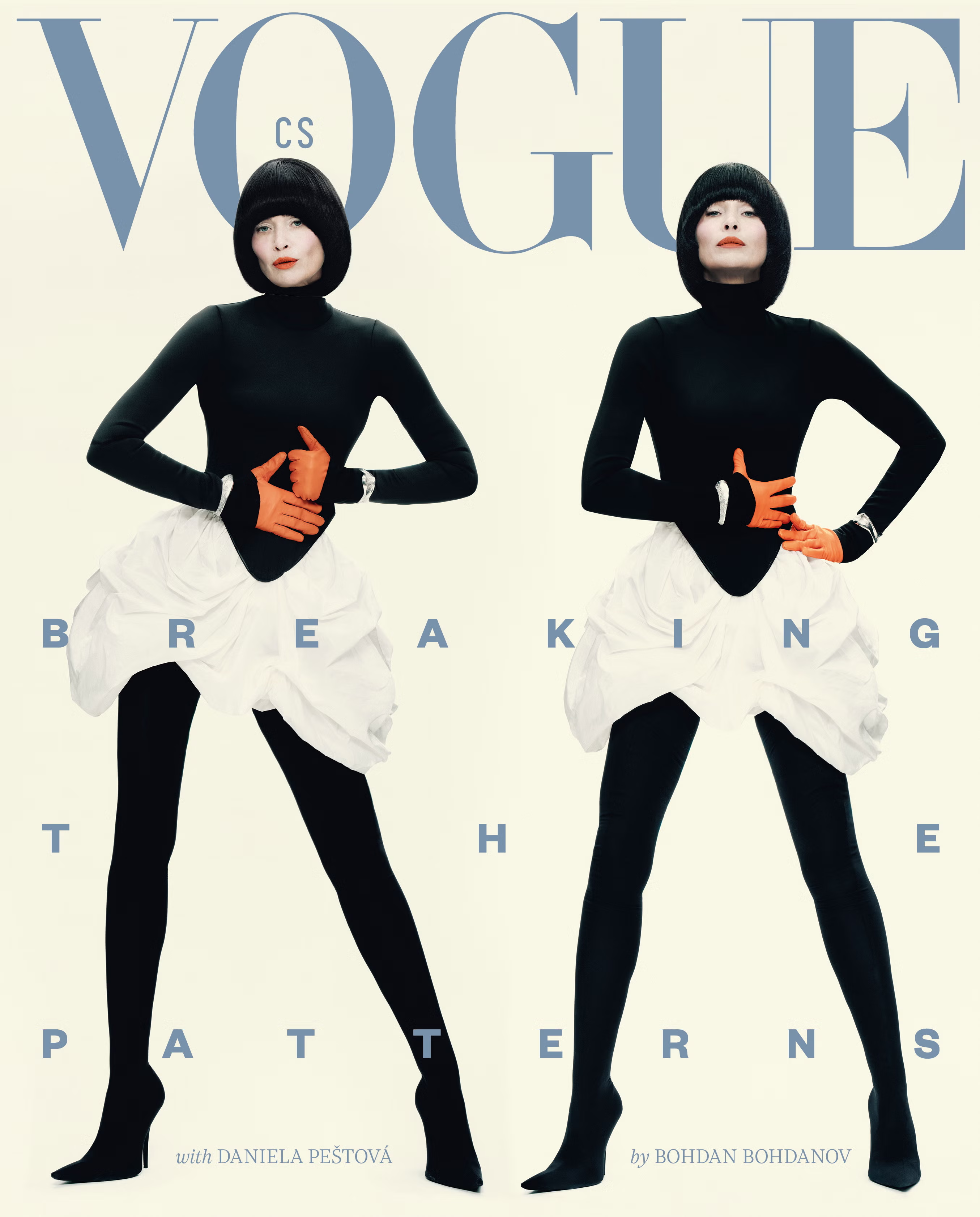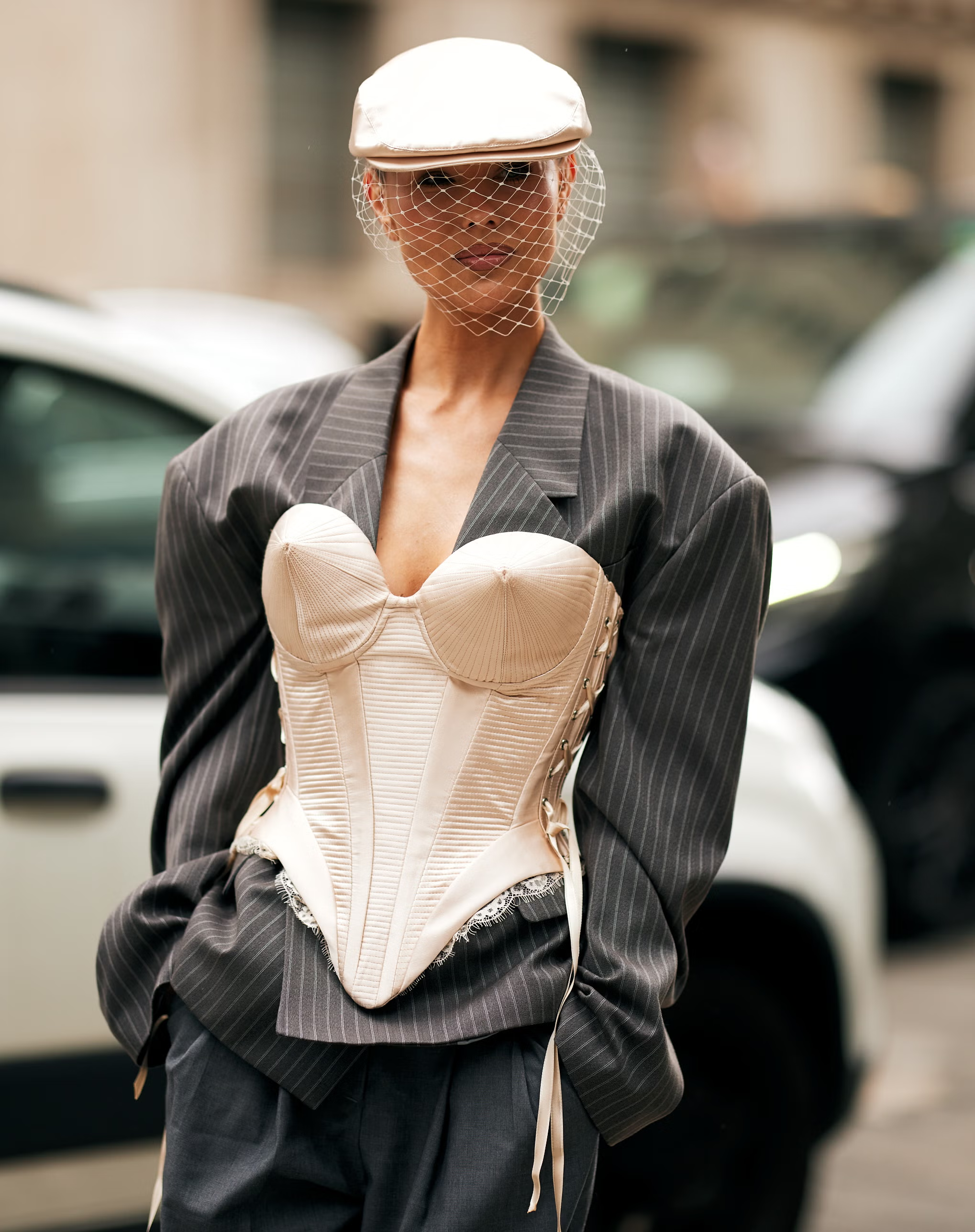Vogue CS in English 

Jessica Michault: Is Fashion Art?
Jessica Michault6. 3. 2020
Is fashion art? If you want a great icebreaker for a fashion week dinner party, all you have to do is pose that question to the table. Then just sit back and let the heated debate begin. It’s a topic that is guaranteed to elicit strong and heartfelt reactions from some, and more clinical and antiseptic responses from others. But one thing is for sure, everyone has an opinion.
Granted this is not a new question. It’s been examined and dissected for decades, with many a final dissertation paper being written on the subject. Historically, fashion has never been seen to have what it takes to be put on the same artistic pedestal as painting, music, sculpture, poetry, architecture and dance. Even cinema gets more artistic respect than fashion, seeing as it’s referred to as the seventh art.
“I like the quote from Pierre Bergé on this topic,” said Pascal Morand, the Executive President of the Fédération de la Haute Couture et de la Mode. “He said ‘fashion isn't art, but I do believe it takes an artist to create it.’ I think this is a great answer. Many people define art as something that isn’t useful in any way. Its only function is to move the spirit, and as most fashion can be worn then that somehow excludes it from the category of fine art.”
This linguistic hair-splitting was also how Karla Otto, one of the fashion world’s most respected PRs, who has been working in the industry for close to four decades, approached the question. “Fashion is an art, but it is not Art,” she said succinctly.
What Otto is probably alluding to is the fact that fashion is considered to be an applied art. Meaning that it’s an aesthetic approach to performing a specific function (dressing the body in clothing). In comparison to fine art, whose sole purpose is to create beauty and pleasure in the viewer.
But if creating beauty and evoking pleasure in a viewer is the bar that art has to reach, well then, I would argue that that happens repeatedly to fashion goers every season. If this is the criteria for defining art, then isn’t fashion one of the purest examples of art, because it is an art that is living and breathing and inviting reaction and interaction with the world on a daily basis?

Foto: GoRunway, Vogue.com
In a way, fashion could be seen as a sort of performance art. In that, it only really comes to life when it is worn. And then a true connection is made between the designer and the person wearing the garment. They are interacting and communicating. Both of them bringing their experience and history into the sartorial conversation. A conversation that says almost as much about the artist as it does about the person wearing it. But also those people who get to interact with it.
“Some people try to avoid eye contact,” recounted Michelle Elie who is famous for wearing some of the most avant-garde Comme des Garçons outfits that Rei Kawakubo has ever created. “But what is so wonderful is that the people who do come up to me and ask me about what I am wearing are interesting people, they are curious and open. And those are the sort of people I want to get to know.”
Just like painters or sculptors or film directors, fashion designers who are artists can be recognized by their work. They have crafted a creative signature that can be identified. Every season they proffer up a collection that is both a clear continuation of their unique aesthetic and yet, at the same time, is something entirely new. The work of Pablo Picasso, Auguste Rodin, and Martin Scorsese also developed over the years. They have all had their “blue period” if you will. Where they stretch as artists and evolve their creative perspective as life gives them more experience to work with.
“The pieces I make live in between the two worlds of art and fashion and I am very flexible about how people perceive them, as both are the truth,” pronounced designer Iris van Herpen.

Foto: Jamie Stoker
Iris Van Herpen, Couture SS20
This dichotomy that van Herpen evokes is an interesting one. And it would be hard to argue against the idea that van Herpen, Kawakubo, Alexander McQueen or Cristobal Balenciaga (just to name a few) are not true artists. It’s just that instead of using paint, stone or film, their artistic expression is transmitted via fabric.
It is worth pointing out that not all paintings, poems or dances reach the apex point to be considered art. This also holds true for fashion. The difference being that for fashion it is the commercial aspect that is at the root of some falling short of attaining the art moniker.
“Beyond all that has already been said and written on the subject, fashion cannot be compared to art, in my opinion, because the designers have to endlessly renew, seduce and sell. And they have to do it more and more often,” lamented French fashion critic Frédéric Martin-Bernard. “No artist, whatever his or her discipline, has to face as many obligations and constraints. In fashion, there is less and less time spent on the beauty of the gesture, the training and the development of a style, an aesthetic,” he added.
Martin-Bernard makes a good point. Fashion is a billion-dollar business and the ever-increasing speed, number of collections and overall demands on the designers behind these fashion houses allow them little time to actually be creative. The hamster wheel of this industry does not leave much room for inspiration, big magic, muses or however you want to define that spark of insight to reach the designers who are powering the whole fashion machine. It’s a state of affairs that should be bemoaned. But as the sustainability movement grows, perhaps this global fashion business model will change with the times, slow down and make space for more reflection.
One strong indicator that fashion is no longer being considered the ugly stepchild of all the other fine arts is the number of art museums around the world that are investing in garments to keep in their permanent collections. Garments are now seen as a way to physically express not only a moment in time, but also reflect the history and evolution of design and how the world is evolving both technically and, to a certain extent, emotionally.
But for me, the debate all comes down to this. The day I could no longer fit into my floor-skimming patchwork denim Junya Watanabe skirt was the day I got it framed and placed it on my wall. To me, it will always be a piece of art, whether or not I actually wear it. Art, much like beauty, is in the eye of the beholder.
Twitter: @jessicamichault
Instagram: @jessicamichault
Website: https://jessicamichault.com



